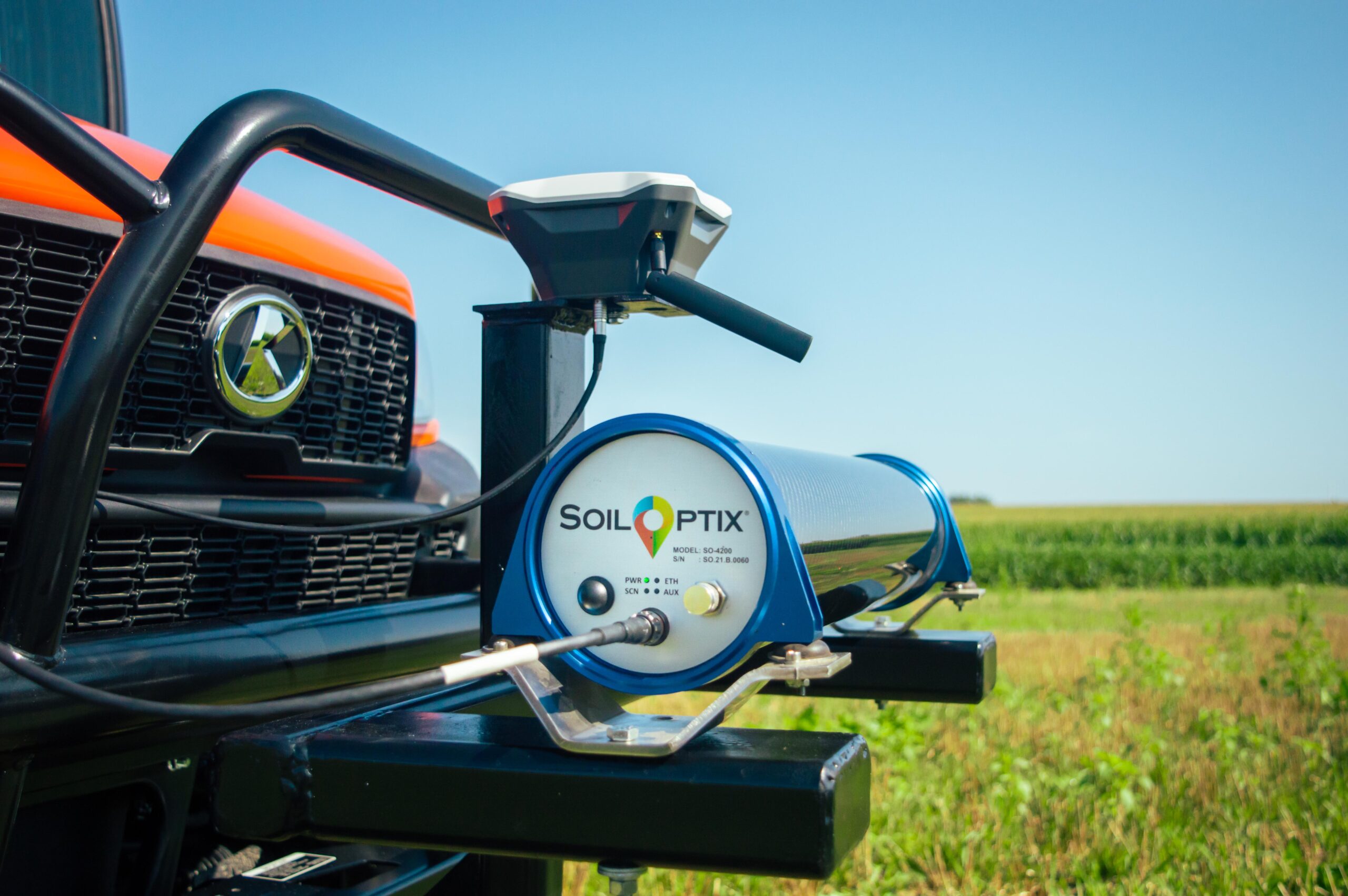In 2013, SoilOptix® CEO, Paul Raymer, was introduced to an intriguing innovation developed in Holland: gamma spectrometry as a tool to map agricultural soil. Being pioneers in the introduction of disruptive agtech to the Ontario market, he and his parents rolled the dice and decided to concentrate their efforts on improving and marketing the mapping solution. Over the ensuing four years, Practical Precision, the original Raymer business, developed the technology as a service to growers in Ontario, Western Canada, and the northern US. In 2017, the Raymers incorporated SoilOptix®, which by then was well on its way to today’s thriving enterprise of over 30 Canadian employees, as well as a smaller team in the Philippines.
This growing group of professionals has positioned a modest agricultural technology business at the forefront of the global soil mapping sector, operating over 110 sensors in more than 15 countries.
Supporting such expansion in so short a time required that the Raymers develop and fine tune internal processes to accommodate growing global demand for data analytics. Furthermore, the tendency of conventional agriculture to adopt sustainable practices offered an opportunity to add soil organic carbon measurement capacity in support of regenerative agriculture.

“Regardless of where you go, soil is in a constant state of decay,” says Paul. “As a result, it is always emitting radiation that reveals important information. The SoilOptix® topsoil mapping system uses a sensor mounted on a vehicle that navigates fields, mapping 12-metre swaths at 20km an hour. Mounted 60cm above ground, the sensor contains a crystal that absorbs bands of radiation—a signature, if you will—which, when coupled with soil samples extracted from strategically relevant locations, allow us to predict soil characteristics with a high degree of accuracy.”
Because the platform is passive, acting as a kind of gamma ray sponge, it can provide data on only the top 30 centimetres of soil, but it delivers consistent readings unaffected by factors such as crop status or type, season, ambient temperature, or ground cover. What’s more, soil is soil, so the technology is as relevant and useful in Albania, Brazil, or Canada as it is in Western Sahara, Yemen, or Zambia.
The team calibrates the system by evaluating readings against soil samples taken after the gamma radiation mapping is complete, creating baseline data that allows increasingly precise analysis of the sensor readings. “The end game is to use our technology to tell producers of any crop—from berries in BC to potatoes in PEI—exactly what is in their soil at a level of detail not previously possible,” Paul notes. “But we typically don’t deal directly with the farmers themselves. Our clients are agronomists and agronomy service providers. They buy the hardware from us, and use it to support their customers—the producers and farm operators. We analyse the data and return the results to the agronomists, who then advise the farmers, providing details that allow for more precise, efficient, and effective use of inputs, optimising expenditures, reducing environmental impact, and increasing productivity and profitability.
It’s essentially a software-as-a-service model. The hardware, despite being the critical component, is just
a tool we use to collect the data.” The company’s improvement of its technology has made it a global leader in providing high-resolution soil fertility and texture information at field scale, offering 335 data points per acre. The results speak for themselves and explain why SoilOptix® is experiencing such steady growth. Why then did the Raymers apply for CAAIN funding to support their project, SoilOptix®: Advancing Processes to Predicting Soil Organic Carbon? “We need the support in two areas. First, we were already working on soil organic carbon (SOC) and reactive carbon data collection and analysis with a partner in the UK,” explains Paul. “Quantification of carbon remains a limiting factor for agricultural producers seeking to balance the value of implementing regenerative agriculture against a carbon market looking to offset related emissions. We wanted to bring carbon analysis services to Ontario, and then eventually expand that offering across Canada. To be able to conduct the necessary research and then turn that carbon sequestration data into a viable commercial offering, we must build our technological infrastructure, particularly high-end servers. Without the additional dollars, we will lack the ability to scale up rapidly to meet demand that grew an average of 50% year-over-year in 2021 and 2022, and shows no sign of slowing down. That’s the second element CAAIN is supporting. You’re allowing us to apply artificial intelligence and machine learning to scale the application of our technology as a leading predictor of SOC and reactive carbon. The result will be to reduce the need for, and cost associated with, testing soil samples without sacrificing the predictive accuracy required for carbon markets.”
Download a PDF copy of this article here, or visit CAAIN for more information.
